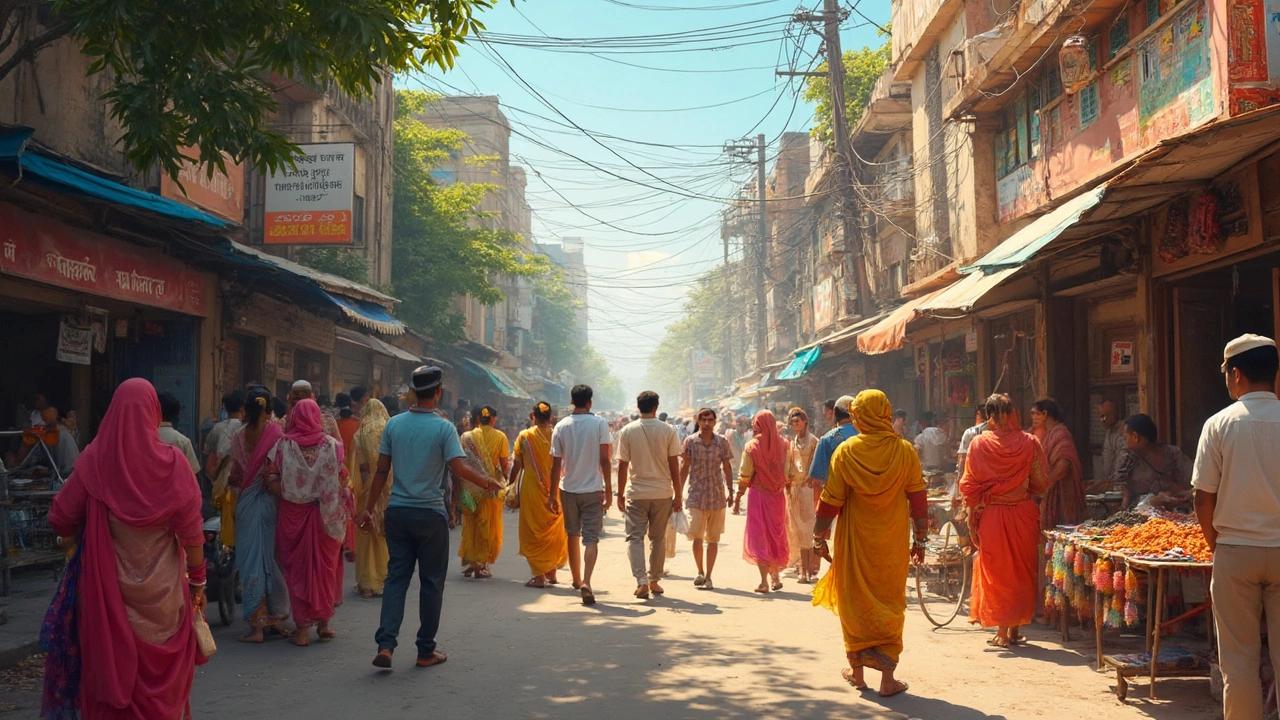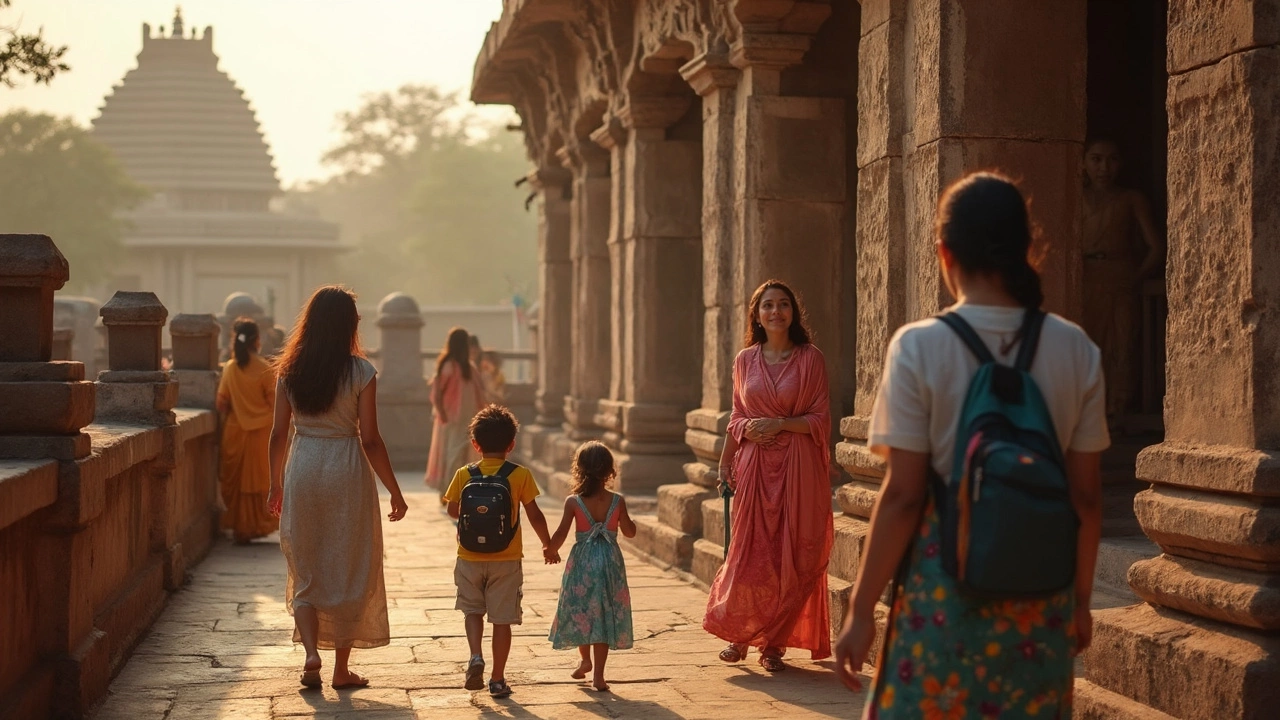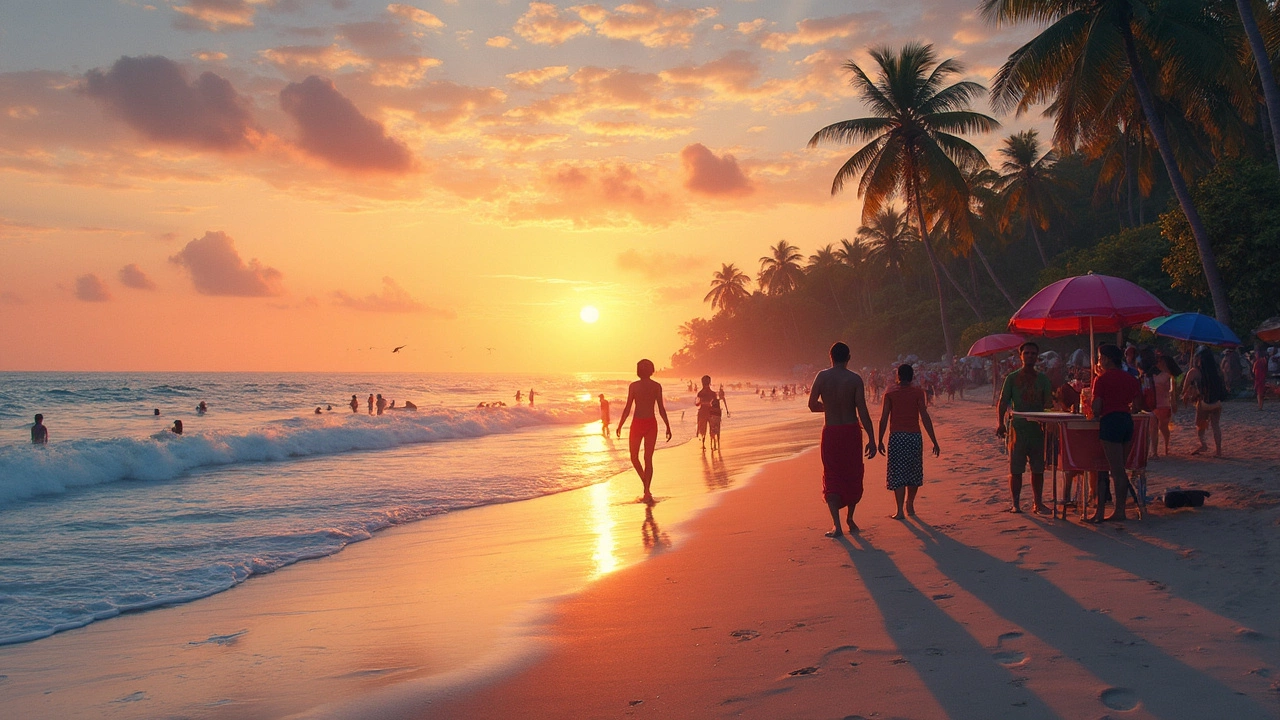SEARCH
Is South India Safe for Tourists? Latest Guide for 2025 Travel


Picture this: sunrise breaks over the coconut palms, the aroma of filter coffee swirls through the streets, and the only thing louder than temple bells are friendly honks from rickshaws. South India has that magnetic pull—timeless temples, easy smiles, zero snow. But, talking about travel, the elephant in the room is: is South India really safe for tourists? Stories fly around, some comforting, some not so much. And in 2025, after waves of global uncertainty, smart travelers want facts, not myths. Let's clear the air, one brutally honest step at a time.
Understanding the Safety Landscape in South India
If you’re only used to big global cities, South India’s calm can feel almost unsettling. The region, spanning Kerala, Tamil Nadu, Karnataka, Andhra Pradesh, and Telangana, isn’t “danger free”—nowhere truly is—but when you crunch numbers, it's among the safest spots in India for travelers. Tourists here are less likely to face violent crime compared to many Western capitals or even the more hectic North Indian metros like Delhi. Kerala boasts an impressive literacy rate (over 96% as of the 2024 stats) and ranks high in gender equality, making it popular with solo travelers, especially women. According to the latest National Crime Records Bureau data, South Indian states consistently post lower crime rates involving foreigners.
The risks that do exist? They’re mostly of the pickpocket or petty scam variety, especially around jam-packed bus stations, bustling markets, or famous religious sites. Larger cities like Bengaluru and Chennai deal with the odd case of drunken rowdiness late at night, but that’s nightlife pretty much everywhere. Violent attacks on tourists are rare enough to make headlines when they happen. People tend to approach you out of curiosity and not out of menace—a huge relief when you’re fresh off a flight and still half-jetlagged.
A game-changer for safety here is the vibrant local community. South Indians take their hospitality seriously. Whether it's sharing dosas or guiding you when lost, genuine help outweighs the rare dodgy encounter. English is widely spoken, not just in cities but in many smaller towns thanks to the strong schooling system. If you look stuck, don’t be surprised if a school kid or sari-clad auntie steps in to help. Don’t let the language barrier scare you. The universal Indian head bob usually means you’re in safe hands.
South India is also an LGBTQ+ friendlier space compared to some other regions of India. Attitudes have changed significantly since 2018 when Section 377 was struck down, and you’ll find open-minded folk, especially in cities and among the younger crowd. This isn’t Berlin or San Francisco, but there’s less overt hostility than tourist accounts from Northern regions sometimes paint.
So, does it mean you can completely let your guard down? Not quite. Stick to well-lit streets after dark, especially if you’re in a new area. Always keep your valuables in front pockets or zipped bags. Just like everywhere else, your intuition is your best travel buddy. If a situation feels off, it probably is.
| State | Popular Cities | Foreign Tourist Crime (2024, per 100K) | Local Police Effectiveness (2025 Rating/5) |
|---|---|---|---|
| Kerala | Kochi, Thiruvananthapuram | 2.1 | 4.7 |
| Tamil Nadu | Chennai, Madurai | 2.4 | 4.6 |
| Karnataka | Bangalore, Mysore | 3.0 | 4.2 |
| Andhra Pradesh | Vijayawada, Visakhapatnam | 2.7 | 4.4 |
| Telangana | Hyderabad | 3.3 | 4.3 |
Street Smarts: Avoiding Common Tourist Pitfalls
Worried about petty crime? The good news: scams and pickpocketing happen, but they’re not a daily norm, and some simple habits can dodge most problems. The “broken meter” rickshaw driver or the overly helpful tout is easy to spot after a day or two. Always negotiate taxi prices or use app-based rides like Ola and Uber, which are everywhere from Chennai to Kochi, and have safety features like GPS tracking. If a driver claims your hotel is “closed” and tries to take you elsewhere, say thanks and insist on your destination. It’s a two-minute fix if you stand your ground.
Crowded bus stations and pilgrimage spots like Tirupati, Madurai, or Sabarimala see tourists as easy targets for pickpockets. Keep wallets and phones in zippered pouches or money belts. In 2025, the tap-and-go payment revolution is nearly everywhere down South, so you can leave hefty cash back at your hotel. Some street scams are almost comical—a friendly stranger promises miracle Ayurvedic treatments or insists on reading your palm. Nod, smile, and move along. The risk is more losing 200 rupees than your passport, so treat it as a travel tax and tell your friends a funny story later.
Lost luggage is rare, but stuff goes missing on the overnight train if you let your guard drop. Book AC train classes, use lockable hard-shell suitcases, and always keep your passport close. Indian Railways has upped its security game—most major stations have visible police presence and CCTV now, especially since 2023’s tourist-friendly reforms. On buses too, keep your small bag in your lap, not on the overhead rack.
South Indian rains can be wild—monsoons flood Kerala or the Konkan coast from June to September, catching new arrivals off guard. Streets can turn slick, and power cuts still happen, especially in older towns. If you’re venturing out during a downpour, rubber flip-flops with grip and a flashlight save the day. Flash floods are rare but can disrupt remote homestays, so check your accommodation is accessible before you head out after a heavy rain.
Here’s a tip nobody tells you: wash your hands fanatically, and eat fresh, hot food. “Delhi Belly” should be renamed “Tourist Tummy”—most upset stomach issues happen when you’re tempted by room-temp snacks left out a while. South Indian food is heavy on the spices but gentle on the stomach if eaten fresh. Stick to busy restaurants (the crowd’s a good sign), and bottled water for drinking and brushing your teeth. Most hotels even in smaller towns offer filtered water—just ask.

Women and Solo Travelers: How Safe Is It Really?
There’s a persistent rumor that solo women travelers or lone backpackers are magnets for trouble in India. Here’s the truth for South India: you’re not invisible, but you’re not a target either. As of 2025, an estimated 40% of all foreign visitors to Kerala are women traveling without a male companion, and most leave with only good stories to tell. The culture here leans conservative in terms of dress and affection in public—you won’t see couples kissing at bus stops. But staring is more curiosity than threat. If you dress a little modestly, blending in is easier. Shawls and loose cotton pants are light, practical, and keep you off the radar.
Streets are noticeably safer during early mornings and evenings, as most people are out and about. If venturing out after 9 pm, stick to main roads and use cabs. Big cities like Bangalore have tons of lively, well-lit restaurants and cafes that stay open late. Solo travelers—male or female—are rarely hassled, and the atmosphere is generally chill. The odd wandering eye feels more awkward than unsafe, but if someone crosses a line, making a fuss usually gets results. The local community looks out for outsiders; a sharp word from a bystander can be surprisingly effective at defusing trouble.
Pretty much every city has “women only” cab services and metro train compartments for that extra layer of assurance. Women’s helplines are plastered on billboards, and most hotels have 24-hour desk staff. Many middle-range and upscale hostels operated by women for women have popped up, especially in Mysore and Kochi. If you have a problem, staff in accommodations take it seriously—they know that tourist reviews online can make or break their business.
Nightlife exists, but it isn’t quite like Goa or Mumbai—bars and clubs shut by midnight in most places, and the scene is more about good food and music than wild parties. That means less chance of rowdiness or after-dark risks you’d see in more notorious party destinations.
Solo trekkers should register with local authorities if heading into the Western Ghats or forest reserves. Snake bites and monkey mischief cause more issues than people in the wild. Most popular trekking routes are well-marked, and several adventure outfits use strict safety protocols. Quick tip: carry a power bank and a local SIM card, as cell coverage can drop off in the valleys. Locals in the hills are traditionally welcoming, and with awareness campaigns, most have clear rules in place for safety and respect for solo hikers.
Health, Hygiene, and Comfort Zones
The good news: South India’s health standards are pretty decent, helped by a robust public healthcare system and strict food safety laws. Cities like Bangalore and Hyderabad are home to world-rated hospitals. Travelers rarely face anything nastier than mosquito bites or a dodgy stomach. Malaria and dengue do exist, but government drives have made most city zones low-risk. Still, stock up on mosquito repellent and wear light, long sleeves at dusk. If you do get sick, treatment is cheap and competent—a routine doctor’s visit won’t set you back more than $10–20 at a private clinic.
Cultural hygiene is a plus—cafés and restaurants, especially in cities and touristy towns, hit international cleanliness marks. Washrooms in train stations can be a bit rustic, so always pack tissue and sanitizer. More tourist hotels are fitting Western-style bathrooms since 2023, which beats the old squat options. Hot showers are fairly standard but ask before checking in if it matters to you.
Vegetarian food is everywhere, from 24-hour canteens at rail stations to fancy Thali restaurants. Even meat eaters end up loving the endless variety of dosas, idlis, uttapams, and spicy rice dishes. Local ice cream, “kulfi,” and fresh fruit are popular, but as a rule, skip cut fruit sold on the street unless it’s peeled right in front of you.
The tropical sun is a stealthy enemy—sunburn sneaks up on you, even if the sky’s overcast. Strong SPF, sunglasses, and hats are must-haves all year. Hydration matters more than you think. Coconut water from street sellers isn’t just delicious—it’s safer and cleaner than most tap supplies.
Hospitals in tourist cities handle everything from allergies to broken bones. Ambulance response, though, isn’t as speedy as in some Western nations. Get good travel insurance that covers medical evacuation just in case. Pharmacies stock most medicines without a prescription, and branded items are affordable. If you take daily medication, bring enough for your stay—finding the exact same brands can be tricky in small towns. For the record, South Indian travel clinics usually don’t see spikes in serious illnesses after festival crowds or monsoon; public health campaigns keep outbreaks under check.

The Digital and Social Angle: Staying Connected and Informed
Travelers in 2025 are as likely to worry about losing Wi-Fi as losing their wallet. Here’s the happy truth: South India is wired up. You’ll find fast broadband or 4G/5G in cities and tourist towns. Cafés from Pondicherry to Cochin have free Wi-Fi, and remote co-working spaces cater to digital nomads. Grab a local SIM card (Airtel, Jio, or VI)—they’re cheap, need just a passport copy, and the data is blazing fast.
For the mundane matters: Google Maps is reliable. Most cabs are trackable via apps, and Google Translate works for Tamil, Telugu, Kannada, and Malayalam signs. Local WhatsApp groups pump out neighborhood safety updates, rain alerts, or festival warnings—your hotel concierge will gladly add you to one if you ask. The social media scene is open, so a quick scan of Instagram or Reddit gets you real-time info about protests, traffic snags, or anything out of the routine.
Police in tourist hotspots are used to dealing with foreign visitors. Emergency numbers are simple—100 for police, 102 for ambulance—same across the entire country. The police tend to be approachable and often eager to help tourists after recent retraining initiatives. Larger cities even have “tourist cell” desks at main stations manned by English-speaking officers.
Cash is fading but not extinct. You can pay for almost anything by card, Google Pay, or Paytm. It’s smart to keep a little cash for chai shops and auto rides in rural spots, but ATMs are everywhere. If your card gets eaten by a machine—a rare issue—bank branches handle replacements with minimal hassle.
Travel advisories from governments like the USA or UK flag only the usual concerns about petty theft and crowds. No South Indian city faces the red-flag zealousness attached to a few northern or border regions. Most embassies maintain a “low risk” assessment for the region. If you register with your embassy, you’ll get text warnings for any local unrest, election noise, or pandemic flare-ups—a tip that’s saved plenty of travelers hassle at festival time.
South India is constantly working to boost its tourism image, and that means tourist safety is a high priority. The good thing is, you don’t need to travel with paranoia; just pocket the same sense you’d bring to Barcelona, Cape Town, or Sydney, and you’ll be set. The magic of the place lies in its laid-back pace, its flavors, and its people. That's what makes it hard to leave, and easier than ever to explore safely.